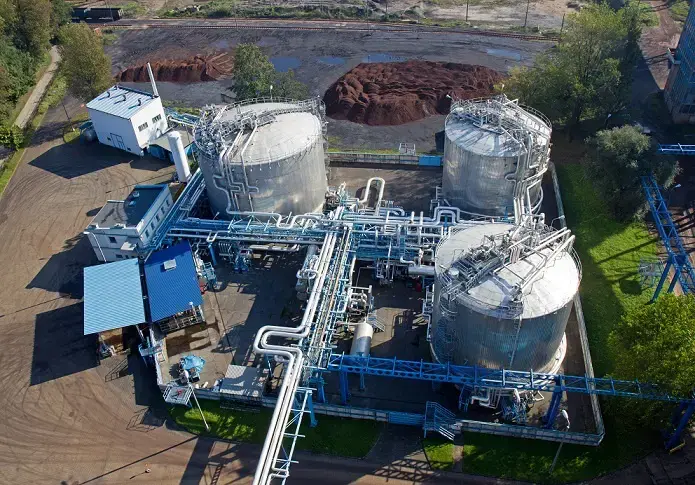Hydrostatic Level Measurement is a proven method for monitoring liquid levels in tanks. Depending on the tank type and medium, various aspects must be considered—especially in closed systems or with specific liquids.
The hydrostatic pressure measurement is one of the most reliable and simplest methods for measuring the fill level in liquid-containing tanks. Below, we explain how this measuring method works and what users should watch out for.
Basic Principle of Hydrostatic Level Measurement
In hydrostatic level measurement, the pressure of the liquid column exerted on the pressure sensor at the bottom of the tank is determined. This hydrostatic pressure is directly related to the fill height and the density of the liquid. The calculation is based on the following formula:
h = p / ρ
h represents the fill height, p the hydrostatic pressure, and ρ the specific density of the liquid. It is crucial to note that the total amount of liquid is not the primary concern, only its height in the container.
Example: A 3-meter high water column produces the same pressure—regardless of whether it is in a narrow or wide tank.
Easier with Water, More Complex with Special Liquids
If water is used as the medium, the density can usually be neglected. For other liquids, the sensor must be scaled accordingly to provide accurate results. It becomes more complicated when different liquids are present in a tank—here, the density must also be measured in addition to the pressure.
Differences Between Open and Closed Tanks
Open Tanks
Whether above ground or buried—open tanks ensure simple measurement conditions due to pressure equalization with the atmosphere. The sensor can be installed directly at the bottom or introduced from above as a submersible probe.

Closed Tanks
In closed vessels—e.g., in chemical or oil industries—there is often higher gas pressure than in the environment. This additionally affects the liquid and pressure sensor. Without correction, this could lead to incorrect fill level results.
In such cases, two pressures must be measured:
- The gas pressure above the liquid
- The pressure at the tank bottom
The actual hydrostatic pressure is derived from the difference. For this, differential pressure sensors are used.

Conclusion
Hydrostatic level measurement is particularly reliable under constant conditions. Users should always keep in mind:
- The density of the liquid (especially with media other than water)
- The tank type—open or closed
- The material resistance of the sensor against the respective medium
While stainless steel sensors are usually sufficient for water, specialized materials like titanium or PVDF may be necessary for aggressive or corrosive liquids. With the right sensors and configuration, precise and durable level measurement can be achieved—even under challenging conditions.
